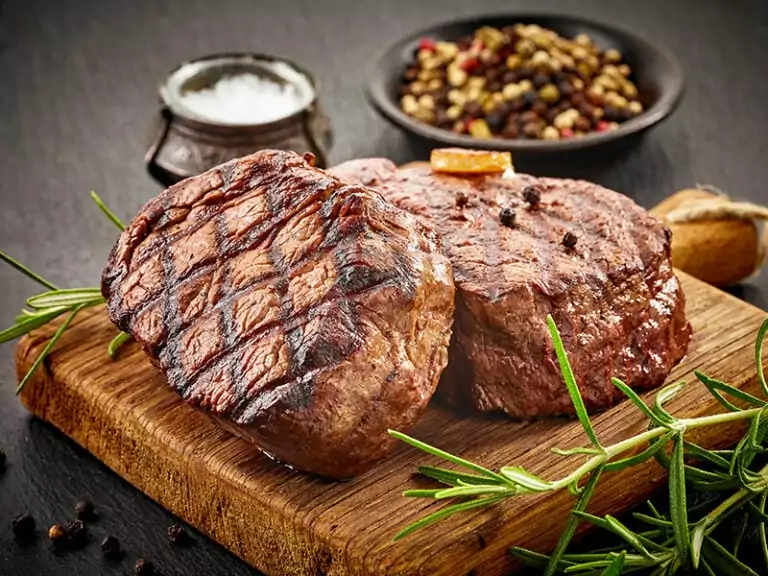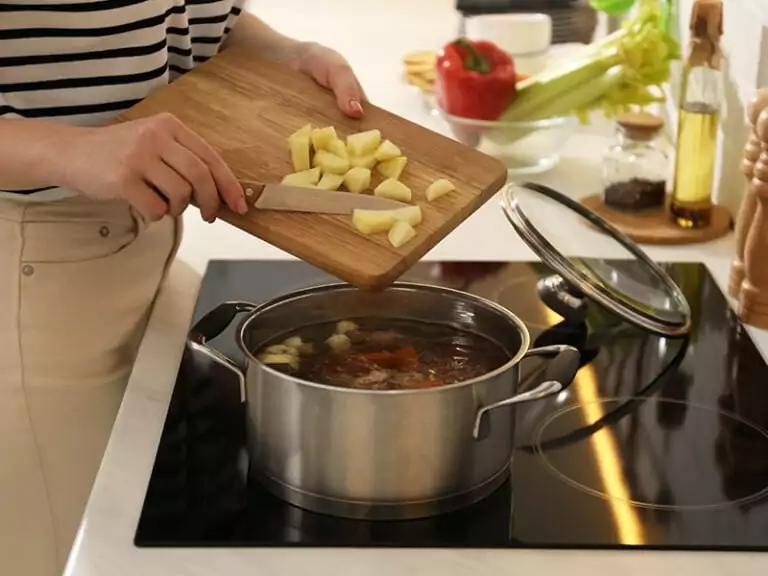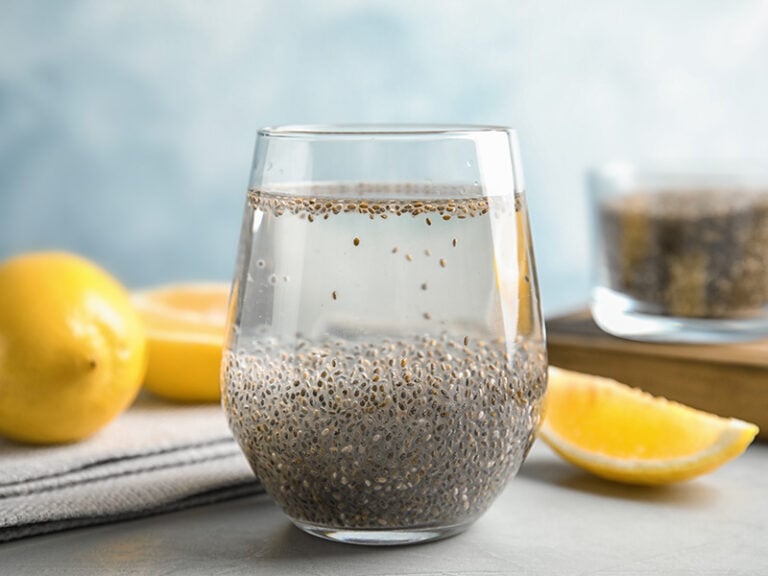These accent seasoning substitutes are what you are looking for, with hearty, familiar taste and healthier properties than MSG. Don’t skip this post if you are aiming for a healthier eating style with zero accent seasoning.
I’ll present you with the most affordable, familiar, and healthy ingredients to replace MSG. These choices can be incorporated into many dishes and cooking methods, giving you a satisfying and nutritious meal.
Keep reading this post to find out what they taste like, their ingredients, and how they fit in your foods!

Why Do You Want To Substitute Accent Seasoning?
Accent seasoning is a popular flavor enhancer that works with many dishes and delivers a tasty, satisfying taste. However, many people don’t like the artificial and somewhat processed flavors of this seasoning.
In addition, the chemical components found in accent seasoning may make people feel uncomfortable to consume. In the following sections, I will discuss the taste, chemical elements, and effects of accent seasoning on your health.
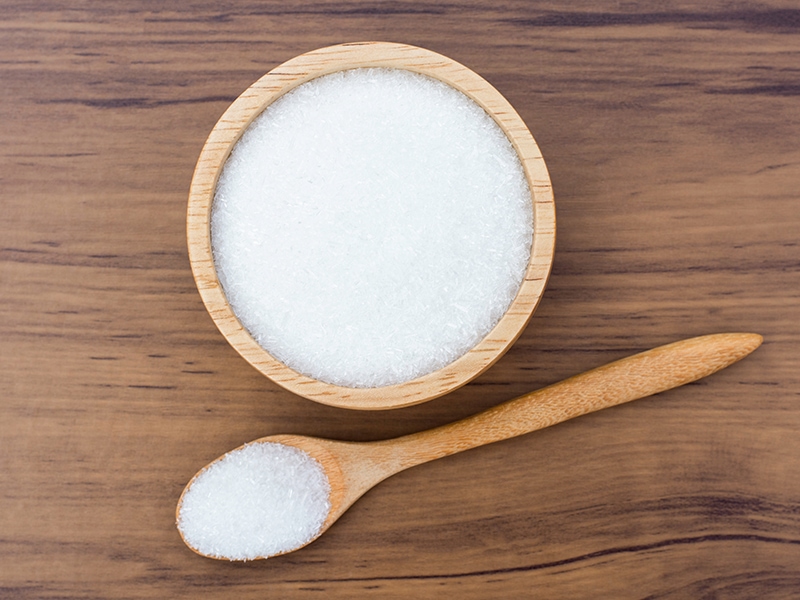
What Is Accent Seasoning, And How Does It Taste Like?
Accent seasoning is a popular flavor enhancer product, commonly called MSG or Monosodium Glutamate (MSG). This seasoning brings a mild blend of salty, umami, and sweet tastes.
MSG has a pure and clear white color with no odor. It comes in soft and tiny grains that look like salt. MSG is also a favorite ingredient of processed food producers, which can be found in many canned products, frozen food, snacks, sauces, and condiments.(1)
Another main use of MSG is to enhance the daily cooked meals. It can bring a deep and satisfying taste to raw ingredients like fish, meat, rice, and vegetables used in various cooking styles.
If you put a little MSG on your tongue, it is mildly salty without any noticeable quality. MSG won’t change the taste of food significantly, just adding a deeper and umami taste.

What Are The Components Of Accent Seasoning?
Monosodium Glutamate is the main ingredient of MSG, plus various other compounds like salt, cumin, oregano, chili pepper, and additives. The ingredients of MSG may vary based on its manufacturer and region.
Nowadays, the most popular manufacturer of MSG is the Ajinomoto Group. They produce accent seasoning by fermenting plant-based ingredients like sugar beets, corn, cassava, and sugar cane.
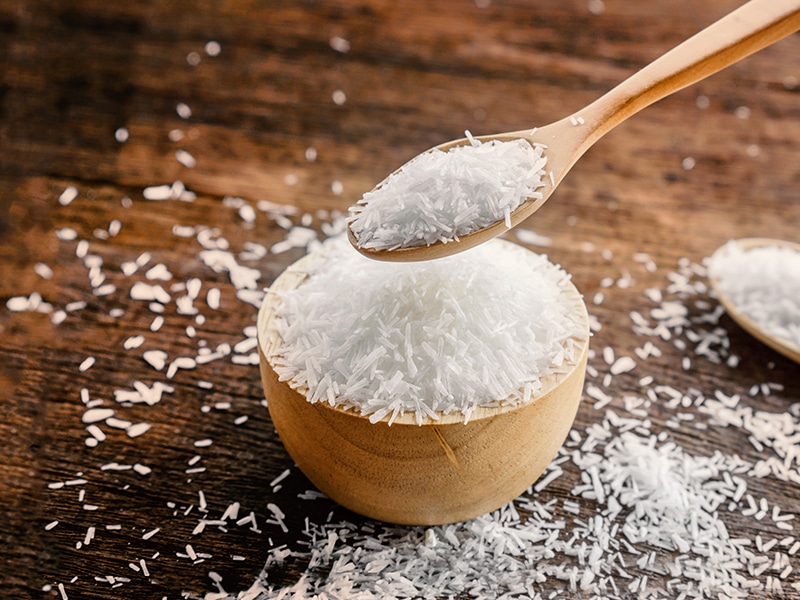
Is Accent Seasoning Unhealthy?
Many consider accent seasoning less healthy than other natural materials like salt, spices, and herbs. However, accent seasoning, or MSG, is not really harmful to your health.
Much research in the past that backed up the bad reputation of MSG proved inaccurate due to their lack of dosage accuracy and control groups. The methodological flaws and unreasonably high proportion used for a typical diet are also other reasons.(2)
Meanwhile, current studies and research have proven that MSG is safe for human consumption. But you should only use MSG in a moderate proportion, 0.55gm per day at most.
Furthermore, MSG is also found in processed and packaged food, animal-based proteins, and dressings or sauce. Since these products have been included in your diet for many years, consuming MSG is not unhealthy.
However, some people are sensitive or allergic to Glutamate and MSG. It can cause mild to severe symptoms like flushing, headache, dizziness, numbness, and fatigue.
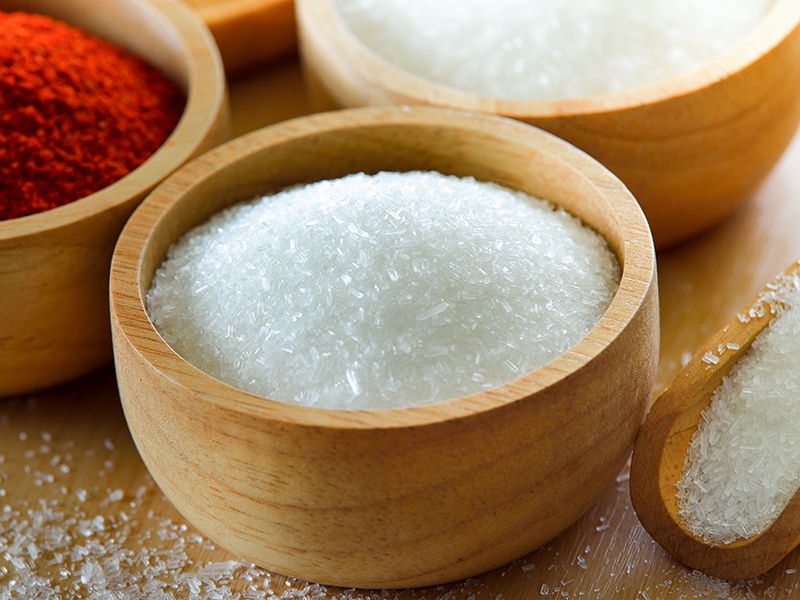
What Makes An Excellent Substitute For Accent Seasoning?
I have researched the tastes, components, availability, and prices of many popular seasoning materials to pick the best substitutes for accent seasoning. Follow the sections below to discover why they are an excellent alternative to MSG.
Costs And Availability
All the seasoning materials listed in this post can be found in many grocery stores and even online retail websites. They are widely used and distributed around the globe, becoming an indispensable part of different culinary cultures.
Therefore, you don’t have to doubt these materials’ safety and quality. In addition, there’s no need to visit a specific region or country to find these flavorings. Just visit the local grocery store and find the best seasonings for your meals.
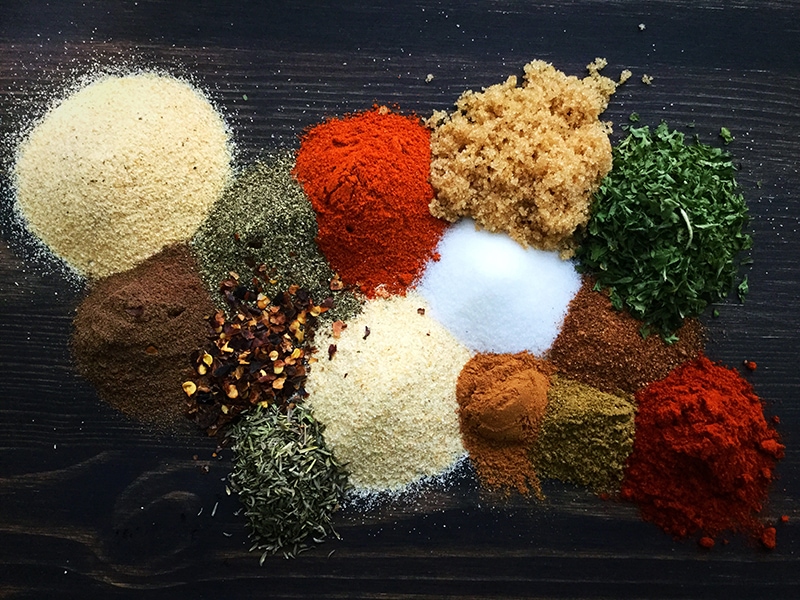
Flavors And Quality
A great accent seasoning substitute doesn’t have to feature the same umami and sweet, savory taste. They can range from sweet, spicy, or bitter to salty. Each one feels so distinct and flavorful that it will make your dish shine.
One significant setback of MSG is its lack of scents and distinct flavor. While MSG adds more depth to your foods, these substitutes can easily become the spotlight.
They can give the food a floral scent and a beautiful color that MSG cannot match. In addition, their tastes feel much more healthy, familiar, and natural since they are made from natural ingredients rather than processed and fermented chemicals.

The 12 Most Excellent Substitutes For Accent Seasoning
Though MSG is not harmful to your health, many substitutes have more natural components and distinct tastes. If you don’t like MSG’s umami and artificial flavors, try out these alternative options.
Table Salt
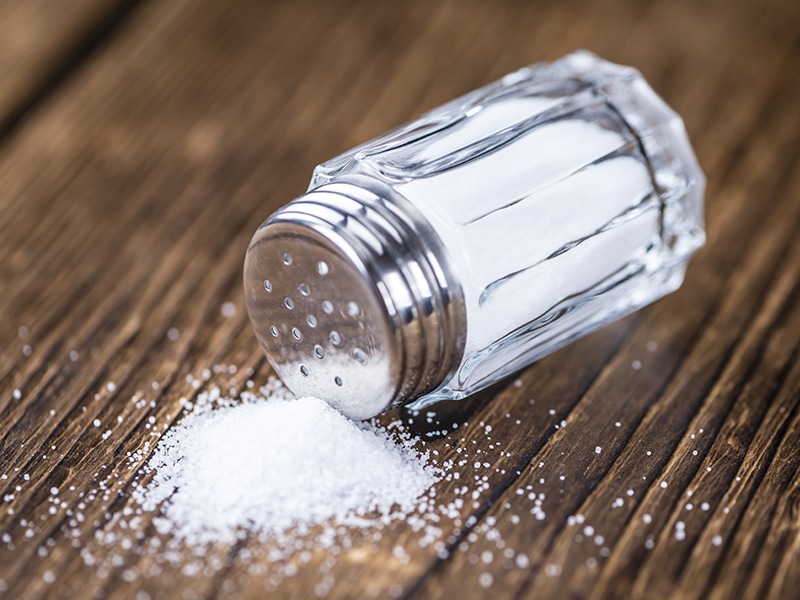
Table salt is one of the best cooking choices for replacing accent seasoning. This worldwide seasoning material contains two essential nutrients for the human body: chloride and sodium, which can maintain the body’s pH balance and hydration.
Like accent seasoning, table salt is an excellent flavor enhancer that tastes delicious on its own or when combined with other ingredients. It can make sweet and umami food taste much better while suppressing unpleasant flavors like bitterness.
In addition, table salt is produced and sold in virtually every corner of the world at a significantly lower price than accent seasoning. It has become a critical ingredient in various dishes and different culinary cultures.
Since table salt tastes intensely salty, only a tiny proportion is sufficient. However, consuming too much table salt will adversely affect your health, especially for people with potential heart strokes or high blood pressure.
In cooking, you can replace 10 portions of MSG with 1 portion of table salt or follow the 1:1 ratio. You can flexibly adjust the proportions to suit your desired flavors. Still, I recommend you start with a lower portion of salt compared to accent seasoning.
Korean Bamboo Salt
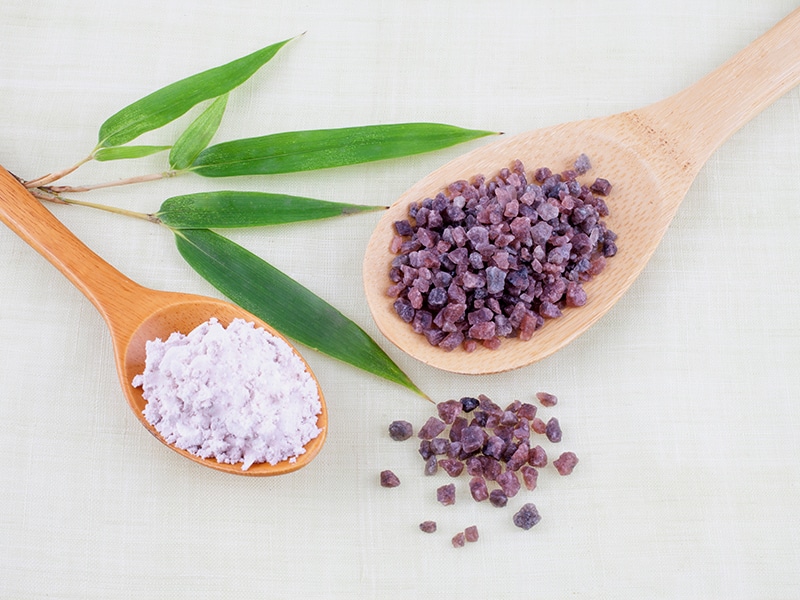
Jugyeom (죽염), or bamboo salt, is a popular seasoning used for centuries in South Korea. In bamboo salt production, the bay salt is packed in bamboo canisters and baked nine times on pine wood at high temperatures.
This baking process helps remove the impurities in bay salt. It also enhances the amount of organic matter in its components, such as potassium, calcium, zinc, and copper. Due to the intense laboring cost and production, Bamboo salt comes at high prices.
As the bamboo constituents permeate the salt, bamboo salt features a pleasantly sweet and savory taste. Baked salt will slowly darken and eventually turn into a beautiful and unique purple color.
With a complex profile of sweetness, saltiness, and an earthy undertone, bamboo salt makes an excellent substitute for MSG. Its plant-like aromas and subtle Surfur tones also add more depth to your dish.
Please note that 9x (9 baked times) is primarily used for medicinal purposes. To substitute bamboo salt with accent seasoning, you should choose 1x or 2x products. Like table salt, you can replace MSG with bamboo salt in the same ratios.
Sea Salt
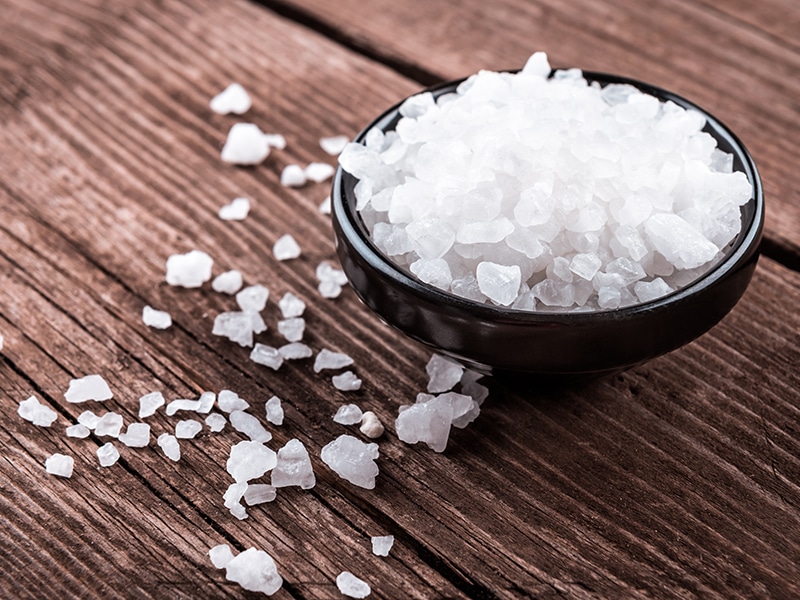
As its name suggests, sea salt is produced by evaporating natural salty water, which typically comes from saltwater lakes or the ocean. It features some minor differences in taste, components, and processing.
While table salt from underground deposits is highly processed, sea salt retains its natural trace minerals, adding more color and flavor. Unlike granulated table salt, the two popular forms of sea salt are crystal and fine grains.
Sea salt is slightly sharper and crunchier than processed table salt. Still, the salty notes will significantly decrease when you cook this salt. Therefore, you can substitute accent seasoning with sea salt in a 1:1 ratio.
This sea salt production is so relaxing to watch!
Kosher Salt
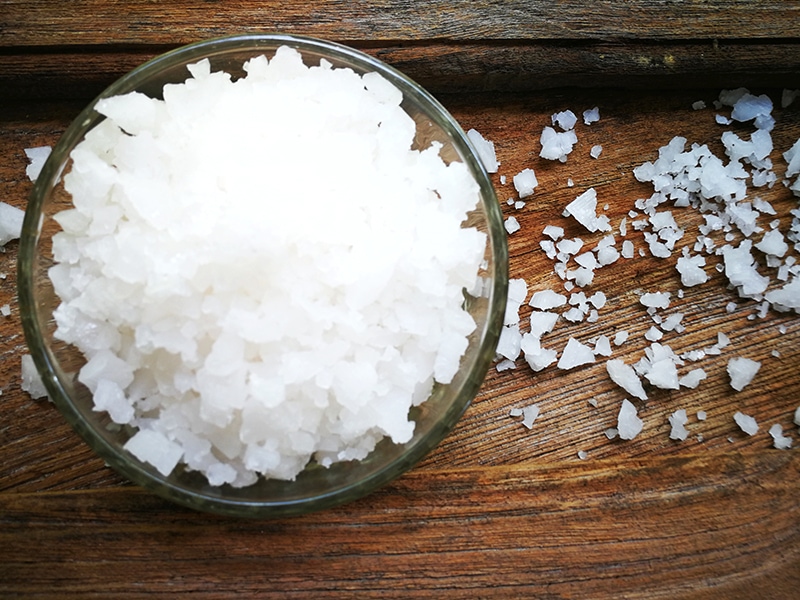
Kosher salt, or kitchen salt, is a famous salt that primarily serves cooking purposes. This seasoning is a choice for table salt since it features similar utilities and flavors.
The difference is that Kosher salt doesn’t contain metallic additives like iodine, dextrose, and fluoride. Kosher salt comes in larger grains than table salt, and its saltiness or sodium weight also varies in different brands.
Normally, 1 teaspoon of Kosher salt can resemble ¾ table salt teaspoon. Based on this calculation, you can substitute 7,5 portions of MSG with 1 portion of Kosher salt.
Spices

The best things I love about spices are their diversified texture, tastes, and tremendous health benefits. Spices are a perfect choice if you want to diversify your diet with more flavorful and healthier food.
Studies suggest that popular spices like black pepper, ginger, turmeric, and cloves boost your immune system and prevent dangerous diseases.
Consuming these spices can minimize the risks of cancer, diabetes, and neurodegenerative diseases. In addition, these ingredients are a rich source of anti-inflammatory compounds and antioxidants that benefit all body systems.(3)
However, spices’ most appreciated value is their diverse natural scents and flavors. For example, adding black pepper can give the food a peppery scent and spicy taste that accent seasoning cannot match.
To resemble MSG, you can pick the spices included in the accent seasoning’s components and mix them together. Remember to add a little salt to enhance your spice mix.
Spice can be used in smaller or larger quantities than accent seasoning to suit your taste. You can also freely customize the spice mix and ratio of each component to achieve the best result.
Herbs
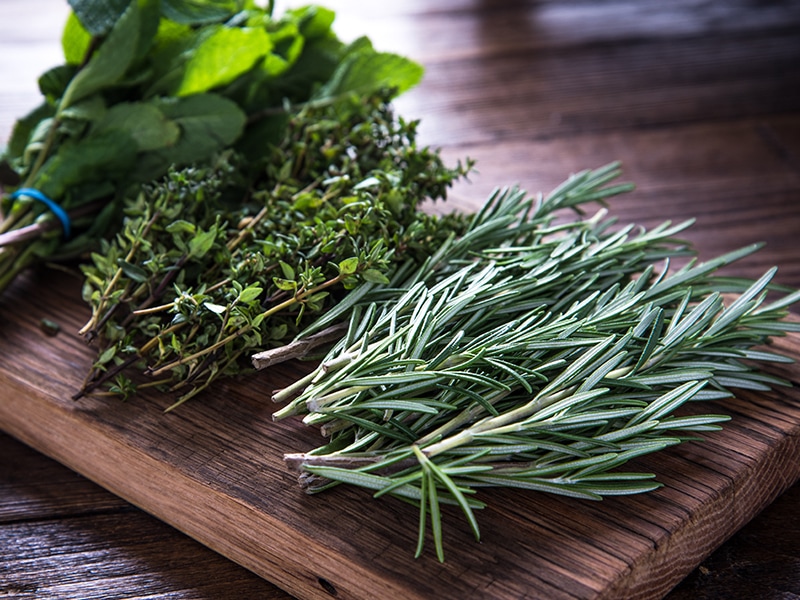
While spices come from various parts of the plants, like roots, seeds, twigs, or barks, herbs often refer to green and leafy plants that can enhance a recipe. These ingredients usually come with an aromatic scent and fragrant properties.
Some famous examples of herbs are rosemary, dill, thyme, parsley, and basil. These ingredients are indispensable components in various recipes, giving them a distinct boost of scents and flavors.
You should use dried herbs like rosemary, oregano, or thyme during the cooking process to impart the flavors. Meanwhile, you should only add fresh herbs like mint or cilantro after the dishes are cooked.
While MSG just enhances the food flavor, herbs can alter the taste, scent, texture, and appearance. The key to using herbs as an MSG substitute is choosing the herbs that pair best with your foods.
Regarding the patio, you should use more herbs than accent seasoning. Still, the quantity can be flexible to achieve your desired taste.
Dried herbs will last longer in dry, cool, and enclosed spaces like storing jars. Meanwhile, you can wash the fresh herbs, dry them thoroughly, and grab them in clean paper towels in zip-top bags to store.
Here is why herbs and spices are the best seasonings for your health!
Beef Stock/ Broth
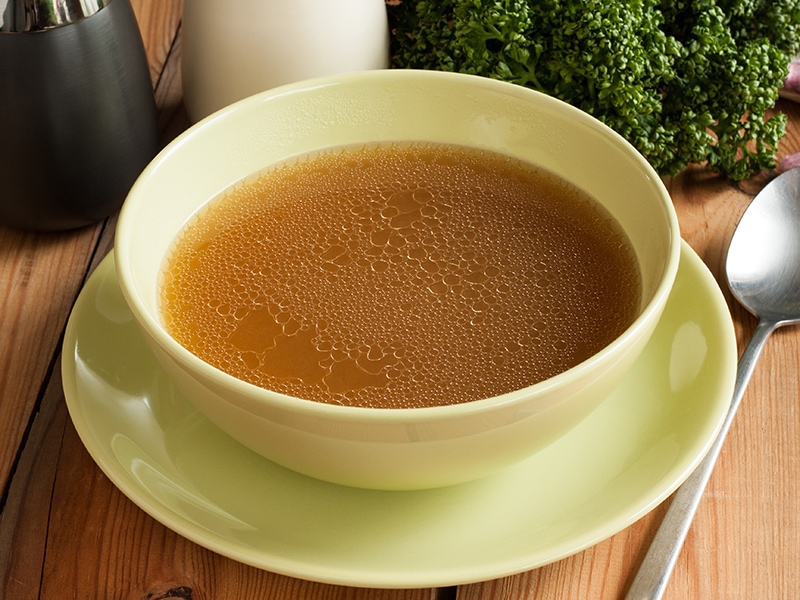
You can purchase the commercially produced beef stock and broth or make your homemade version. Beef broth products are typically a cooking liquid of bones simmered shortly in water.
Meanwhile, the beef stock also involves the simmering of bones, but for a longer period, with the addition of herbs, spices, and other seasoning materials. As a result, beef broth and stock are very delectable, beefy, and protein-rich.
These ingredients are also versatile and can be used to enhance or adjust the food’s flavors. In addition, you can use beef stock to thicken gravies and sauces or incorporate it in salads and dressings.
The liquid form and filling texture of beef stock is an excellent substitute for accent seasoning. Since beef broth is not intense, you should use it in larger quantities to replace accent seasoning.
Vegetable Stock/ Broth
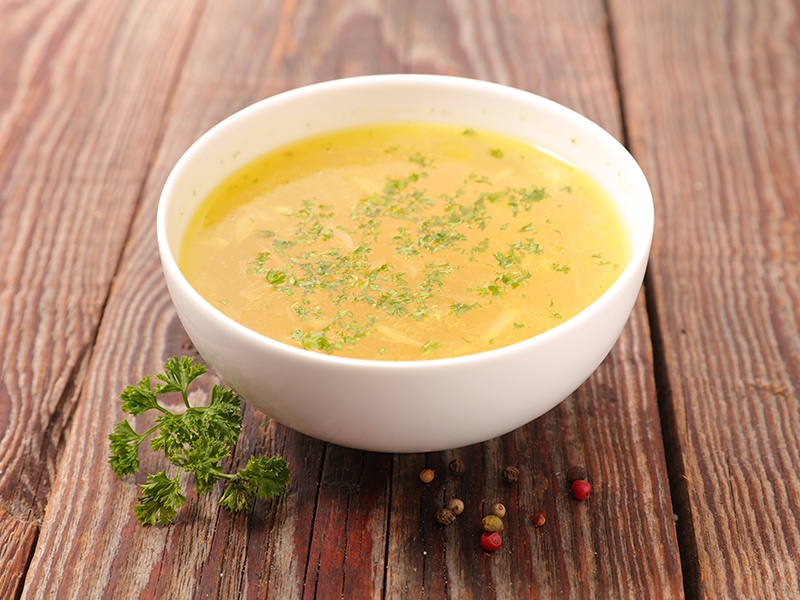
Vegetable stock is an excellent choice for vegetarians looking for an accent seasoning substitute. This liquid ingredient is made by simmering aromatic veggies like onions, carrots, and celery in clean water.
Besides its warming and soothing effects, vegetable stock is a rich source of vitamins, minerals, and various nourishing compositions. The flavors of vegetable stock vary based on the ingredients it’s made of.
If you want to recreate the umami MSG but don’t like the beefy beef stock, the vegetable stock would be a perfect choice. However, vegetable stock is significantly less potent than the other seasoning materials.
Therefore, you can add tomato paste, soy sauce, and salt to the cooked vegetable stock to enhance the taste. Also, use vegetable stock in larger quantities than MSG to achieve the best outcome.
Soy Sauce
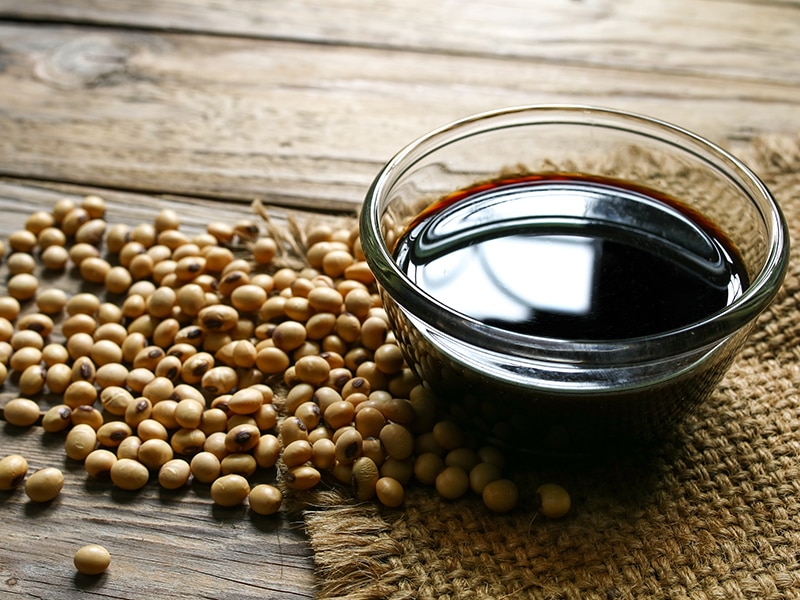
Soy sauce is an excellent condiment, with a tasty umami and savory taste from fermented soybeans. The unmistakable dark and clear color, plus the additional hint of sweetness, make it an excellent seasoning material.
Also known as soya or shoyu sauce, soy sauce is a fermented product from wheat, salt, fermenting agent, and soybean. In Asian cuisine, soy sauce is a famous dipping sauce that combines well with small bites and dumplings.
With a high sodium content, you can use soy sauce to substitute both salt and accent seasoning (one tablespoon of soy sauce for one teaspoon of accent seasoning). It can marinate cooking ingredients, season food, or add straight to the cooked dishes.
However, MSG is included in some soy sauce products. If you want to avoid this composition, choose MSG-free soy sauces or check the product’s ingredient labels before purchasing.
Take a closer look at the production and usage of soy sauce.
Creole Seasoning
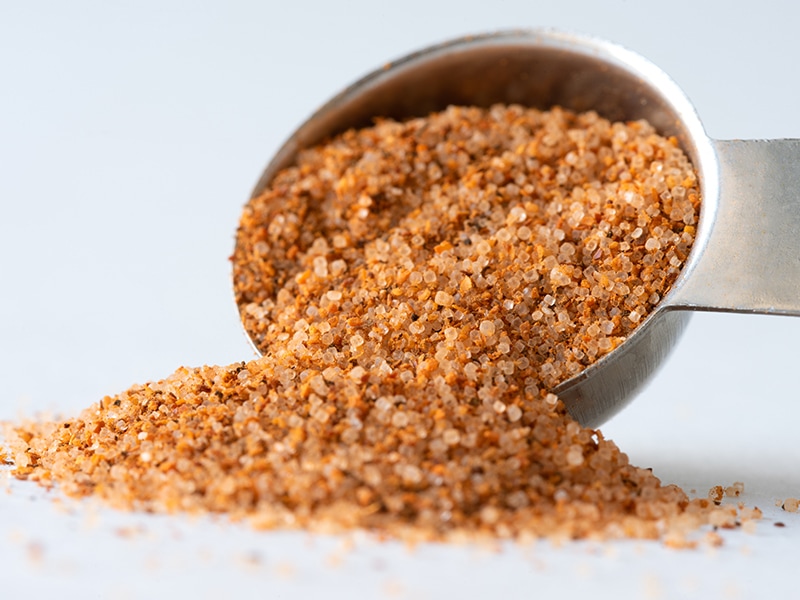
Creole seasoning is a combination of different spices like salt, garlic, pepper, and oregano. It is prevalent in Creole cooking culinary cultures, giving the food an extra kick of scents and flavors.
Instead of seasoning the soups, stews, and vegetable dishes with MSG, you can use creole seasoning. Its natural flavors and herbal scent will bring your food to another level.
Creole seasoning is available in many grocery stores and online retail shops. You can also make your homemade version to customize the ingredients and suit your taste better. In addition, it can help you avoid the preservatives found in commercially produced products.
Adding too much creole seasoning will make your foods too salty and spicy. You can substitute accent seasoning with creole in a 1:1 ratio for the best results. This product pairs well with stews, soups, seafood, meat, and salads.
Cajun Seasoning
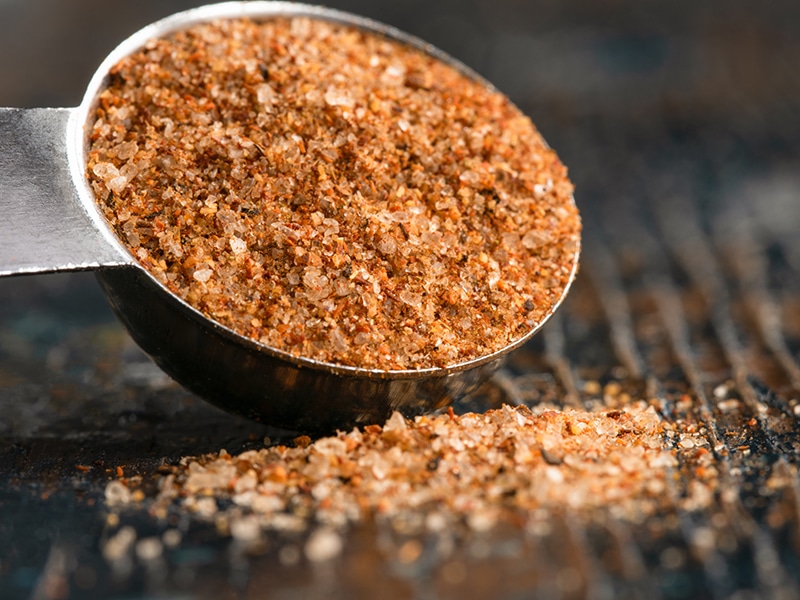
This rustic seasoning material originated from Louisiana, the hometown of the infamous Cajun cuisine. There are various variations of cajun seasoning, but it typically contains ingredients like garlic powder, cayenne, oregano, pepper, and a lot of paprika.
The main profiles of commercial Cajun seasoning products are spiciness and saltiness, plus a smoky and garlicky undertone. The spicy taste of Cajun is very intense, but it will vary based on the seasoning’s manufacturer.
This spice pairs excellently with soups and stews, seafood dishes, sauces, and French fries. You can also use Cajun seasoning to marinate grilled chicken or barbecue meat.
It also works well with any recipe requiring accent seasoning. Replace one teaspoon of MSG with two teaspoons of Cajun to achieve the best dish.
You can use salt and your favorite spices to create a perfect homemade cajun seasoning. Making this ingredient is very simple, as you just need to blend all the ingredients and store the powder in a jar.
Bouillon Powder
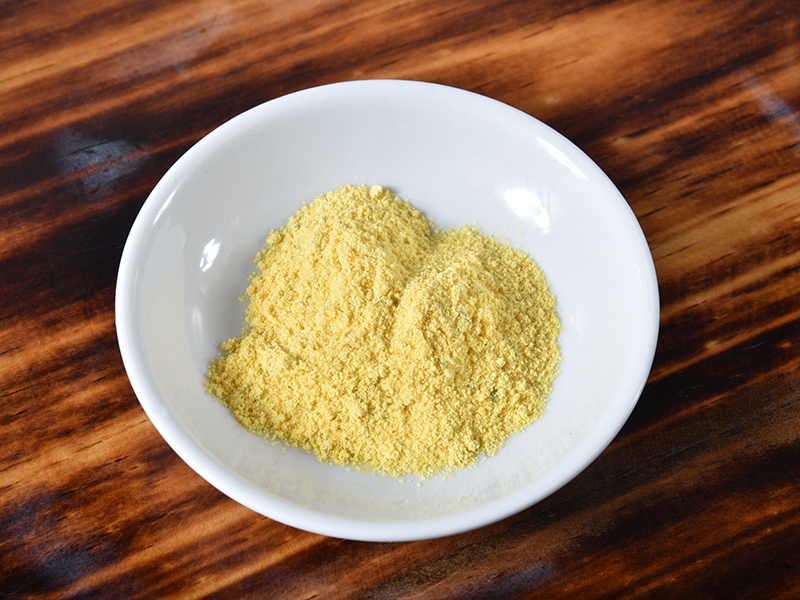
Bouillon powder is a favorite flavor-boosting product that comes in many forms, most commonly yellow cubes, packets, or pastes. They are usually a mix of salt, fat, and dehydrated extracts from red meat, vegetables, or chicken.
The cubes of bouillon powder can last for ages and incorporate wonderful tastes from beef, seafood, or chicken. However, some bouillon products contain MSG, so please check the product’s labels carefully if you want to avoid Monosodium Glutamate.
Bouillon powder is an ideal alternative for accent seasoning in pasta, casseroles, curries, or dumplings. You can also stir it into the sauces or soups to make a hearty broth and give them a beautiful orange texture.
To substitute accent seasoning with bouillon powder in food recipes, use one cube of bouillon powder for every teaspoon of accent seasonings.
But not all food types pair well with bouillon powder, especially dry recipes. Also, you should only add bouillon powder to the cooked dish rather than cold food. The high heat can bring a more satisfying taste.
Shiitake Mushroom Powder
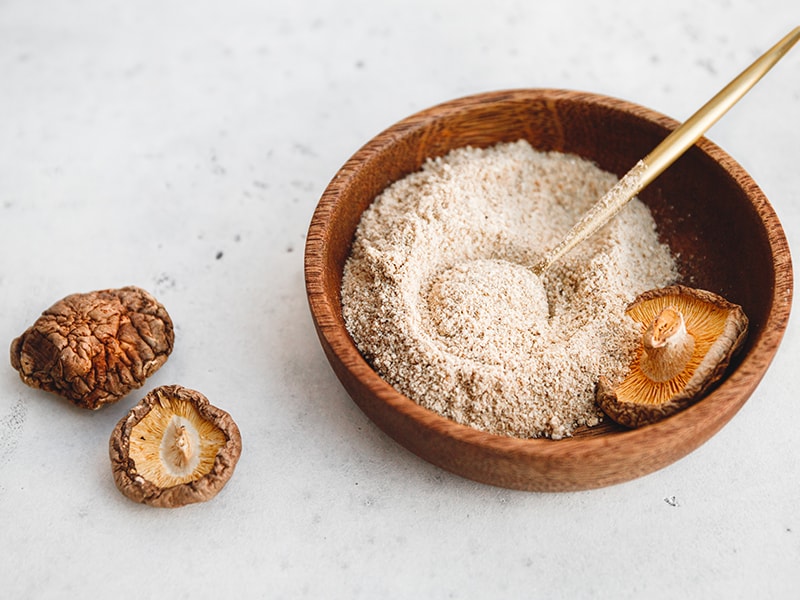
Shiitake mushroom powder is an excellent seasoning material for soups, dry rubs, and sauces with its intense earthy undertone and savory flavor. It’s the powder of shiitake, one of the most popular mushrooms in east Asia.
This mushroom is an abundant source of minerals and natural antioxidants like potassium, zinc, selenium, and magnesium. It also contains healthy vitamins and amino acids commonly found in meat.
Therefore, consuming shitake mushroom powder can heal your body’s systems, boost health, and enhance blood circulation. The recommended amount is around two tablespoons of shitake mushroom powder every day.
To resemble the MSG, you can soak Shiitake mushroom powder with seaweed in broth or water.
Learn how to make homemade shiitake mushroom powder and use it in cooking!
Fermented Shrimp Paste
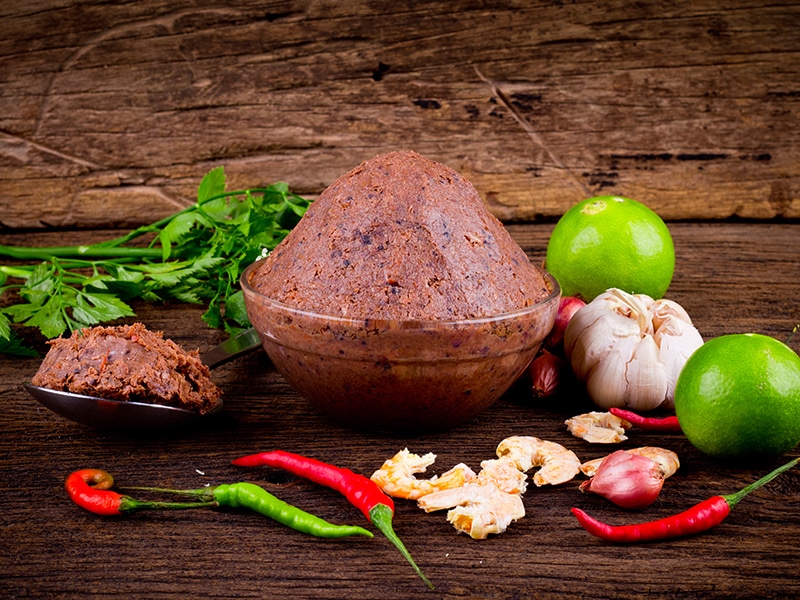
Also called prawn sauce, fermented shrimp paste is a popular condiment in many Asian culinary cultures. It’s made by fermenting the crushed shrimp and salt mixture for a few weeks.
Fermented shrimp paste is the core ingredient of sambal, sauces, curries, and many other traditional Asian foods. It features an intensely salty and savory taste, plus a strong flavor of concentrated shrimp.
However, shrimp paste gives a pungent and somewhat unpleasant smell to people unfamiliar with this ingredient. Consider carefully before using shrimp paste if you cannot tolerate its pungent odor and distinct taste.
In addition, shrimp paste should only be added to the cooked dish rather than consumed raw. This ingredient is rich in calcium, phosphorus, and vitamin D, which can help prevent fish decay and bring other significant health benefits.
Fish Sauce
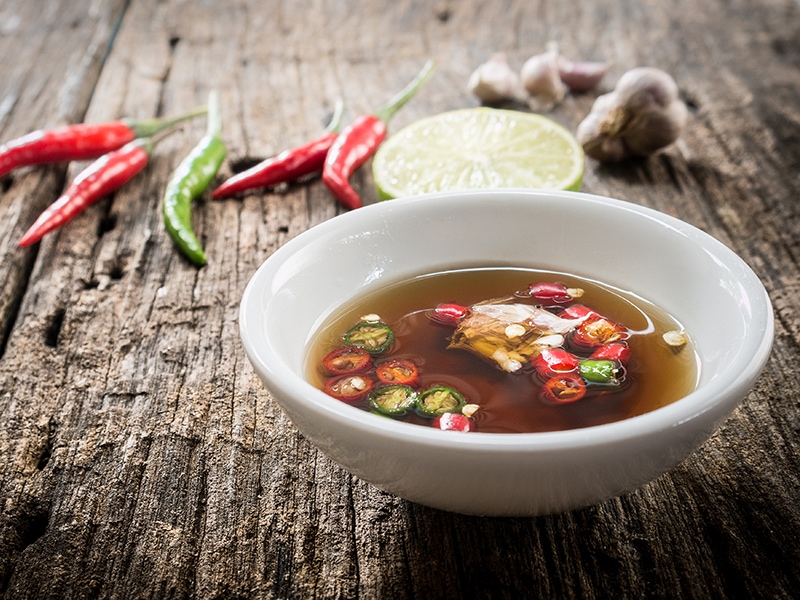
The method of fermented fish to produce fish sauce has been around for thousands of years. Still, most fish sauce products nowadays come from the Asian region. It’s an indispensable ingredient in Asian cooking.
The fish sauce features natural umami, savory, and earthy taste, making food irresistible and complex. Briny and salty fish sauce tastes similar to pure sea salt.
In other words, fish sauce is the liquid form of salt but with a more complex flavor. In cooking, it can be used to marinate meats and ingredients and season soups, stews, and salad dressings.
How To Pick A Suitable Accent Seasoning Substitute?
Though the accent seasoning substitutes can enhance the flavors, they feature distinct tastes that only work well in some specific recipes. Therefore, you have to consider a few factors to pick the suitable seasoning material for each situation.
In addition, you may prefer the taste of one condiment over another since their tastes are so distinct. Here are some helpful tips to help you pick your favorite alternative for accent seasoning.
The Dishes You Want To Make
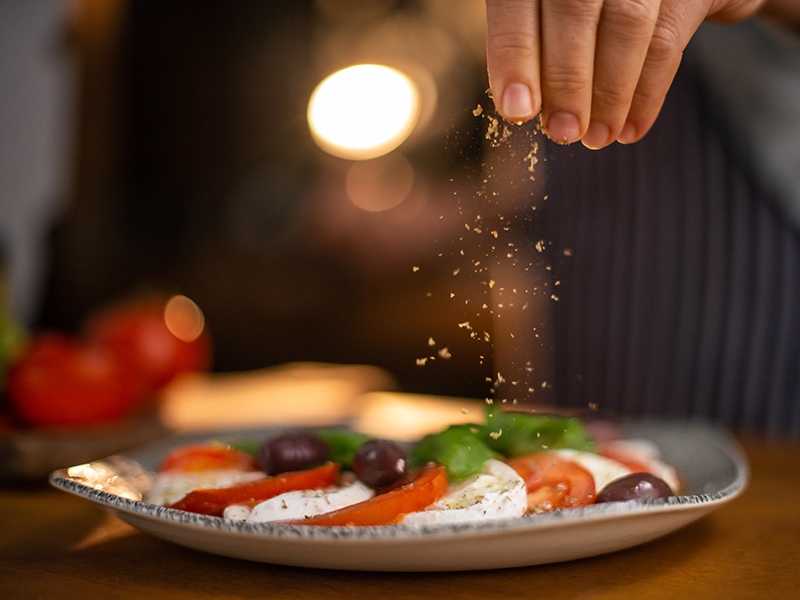
Salt is the most versatile seasoning material you can use in various cooking methods and recipes like stews, grilled food, salads, or casseroles. However, beef or vegetable stock is a better match for slow-cooked and stewed dishes with its filling texture and flavor.
Meanwhile, soy sauce is the ideal choice for marinating seafood or grilled meat, and creole seasoning works best with shrimp, chicken, and vegetables.
Therefore, there’s no need to get creative since some dishes and condiments are simply not a tasty duo. You should stick to the original recipes and cooking techniques to choose the most suitable seasonings.
Your Personal Taste And Preference
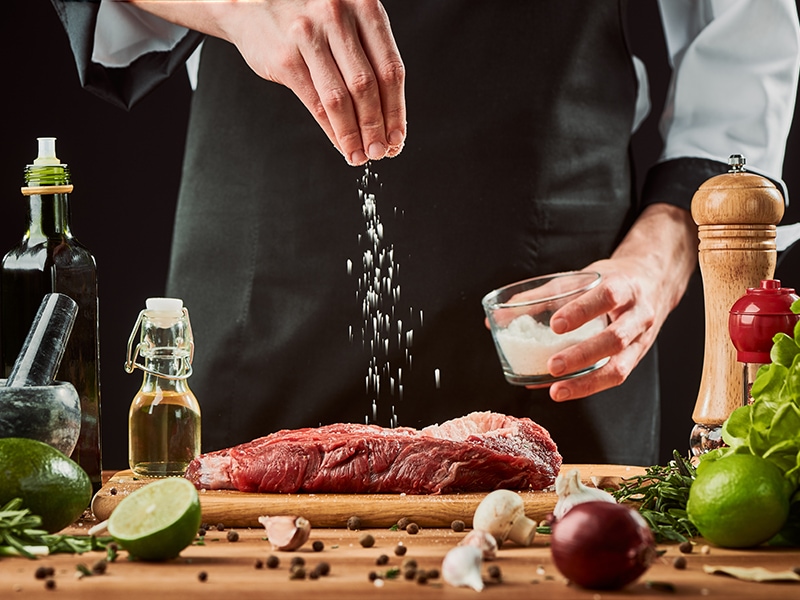
The best seasoning materials are the ones that suit your personal taste and eating habits. Salt is the favorite choice for the majority with its simple, pure, and intense salty flavor. Meanwhile, fish sauce or creole seasoning brings the extra sweetness and umami taste.
If you prefer herbal scents and a kick of natural tastes, go for herbs, spices, or bouillon powder. I recommend you try all the condiments listed to discover your favorite.
In addition, you should pay attention to the health benefits and side effects of these substitutes. For example, most soy sauce products contain gluten and are unsuitable for people with celiac disease or gluten allergies.
Meanwhile, avoid bouillon powder, fish sauce, or beef stock if you are a vegan or following a vegetarian diet. Lastly, incorporate more herbs and spices into your diet if you want a healthier lifestyle.
If you are a fan of herbs and spices, check out these helpful tips on buying and choosing them.
How To Make Your Homemade Accent Seasoning Substitute?
Making a homemade accent seasoning substitute version helps avoid the additives and chemical substances added to commercial products. In addition, you can incorporate your favorite ingredients to create a perfect profile.
Here is the ingredient list for a delicious accent seasoning mix. You can add more ingredients and adjust the amount if desired.
- 26 oz of table salt
- 5 tablespoons of cayenne pepper
- 3 tablespoons of black pepper
- 3 tablespoons of onion powder
- 3 tablespoons of garlic powder
- 3 tablespoons of chili powder
- 1 tablespoon of thyme
- 1 tablespoon of sweet basil
- 1 tablespoon of bay leaf
You can increase the amount of herbs and spices to enhance the seasoning’s spiciness. Also, feel free to add more quantity of a certain component if you prefer its tastes and scents.
After gathering the ingredients, follow these steps to prepare your homemade accent seasoning substitute.

Step 1: Combine The Components
Stir all the components in the blender following your desired ratios, then blend them in half a minute. The blending time can be adjusted as long as the mixture features a powder-like and smooth texture.
Step 2: Add The Salt
When the mixture turns into smooth powder, add the salt and blend the seasoning briefly for an additional five seconds. Turn off the machine when the salt combines with the seasoning mix.
Step 3: Store Your Homemade Accent Seasoning Substitute
Keep the homemade seasoning in a cool, completely dry jar or air-tight container. Environmental elements like direct sunlight, moisture, humidity, and hot temperature can ruin your seasoning.
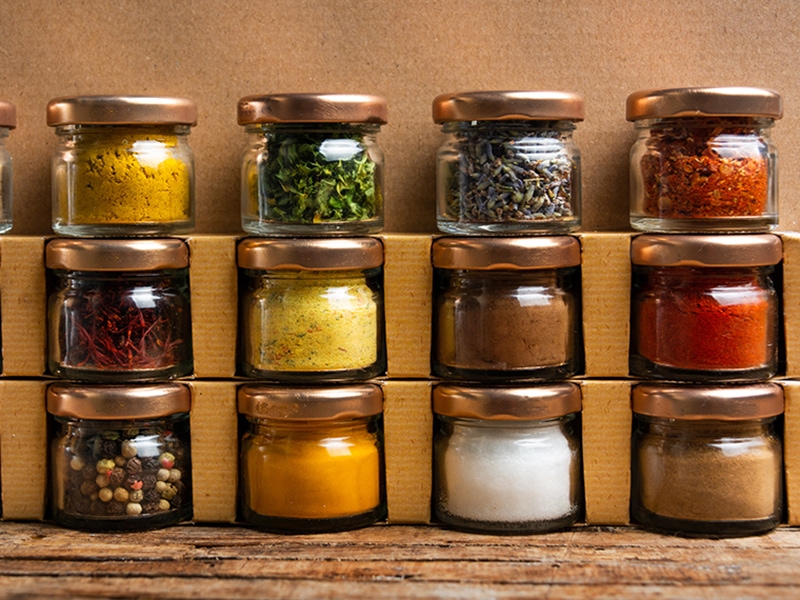
FAQs
The answers below will provide more in-depth information about accent seasoning’s effects on human health and its alternative options.
Accent Seasoning Is Not Bad, But There Are Better Substitution
These accent seasoning substitutes can help you cook a more delicious and healthier meal without using MSG. Though accent seasoning is not unhealthy, you would want to incorporate these substitutes to diversify your diet and increase the food’s tastiness.
Some seasonings can help tenderize the food or make the dishes more complex. Just try all the suggestions in this post, and you will discover their stunning flavors and cooking utilities that accent seasoning cannot provide.
If you know of any better substitute for accent seasoning, feel free to comment and leave your recommendation. I always appreciate your contributive comments and the time you spent reading this post. Please give me a good rating and share the post if you enjoyed it!
References
- Medicalnewstoday.com. 2021. MSG.
- Healthline.com. 2022. Is MSG Really Unhealthy?
- Pubmed.ncbi.nlm.nih.gov. 2013. Active Compounds In Herbs And Spices.

